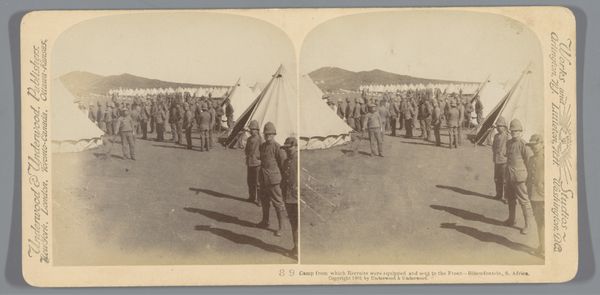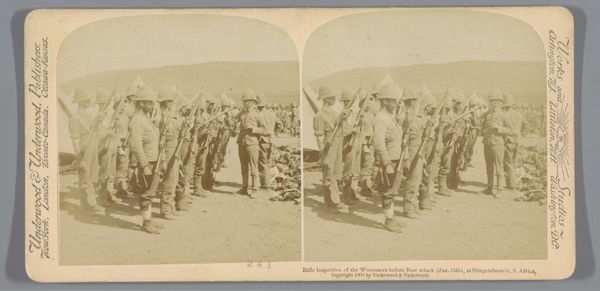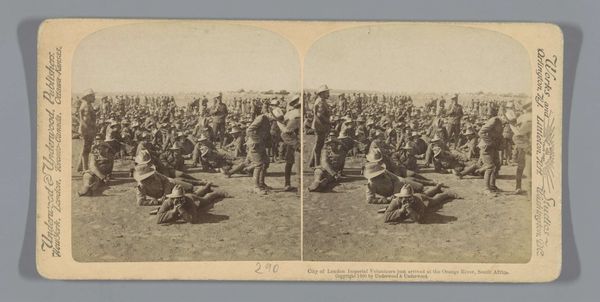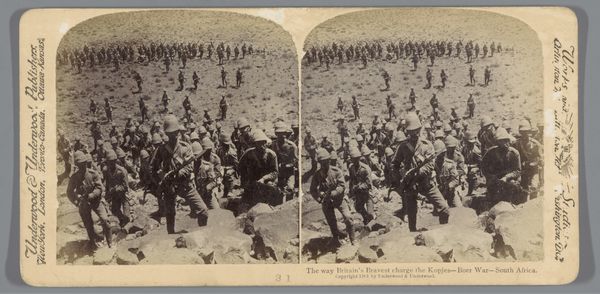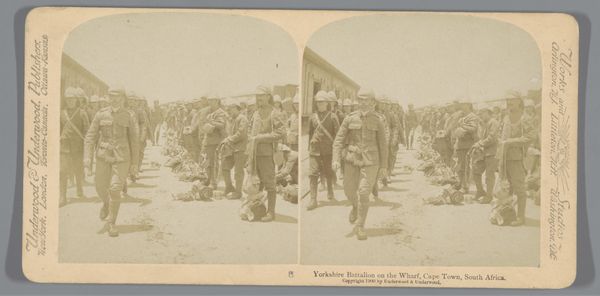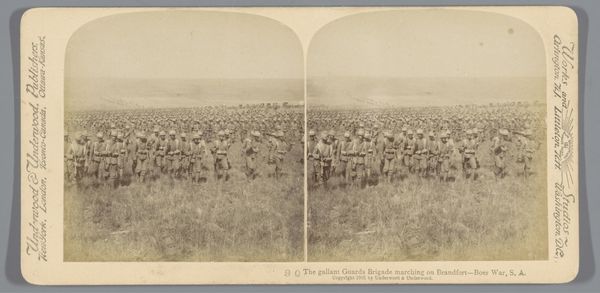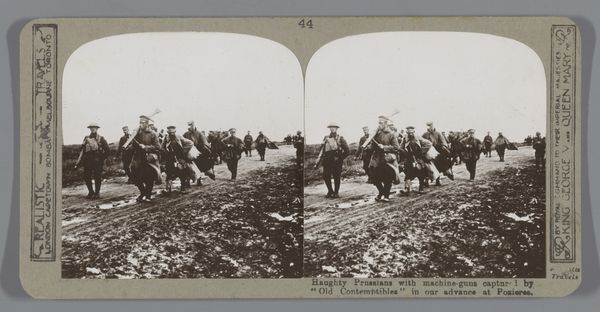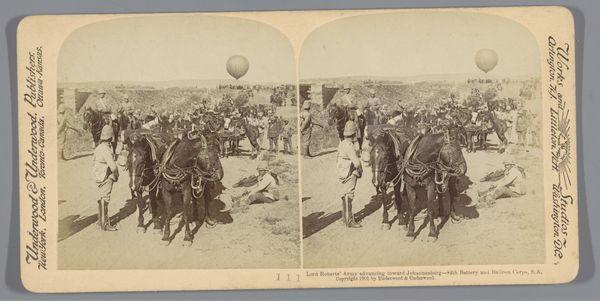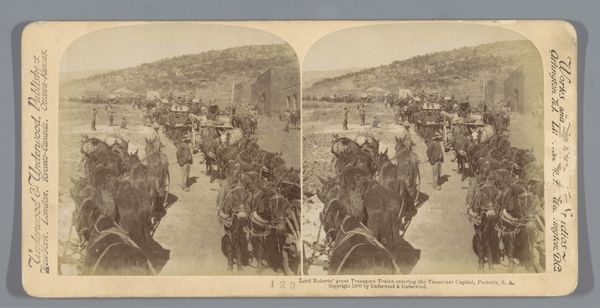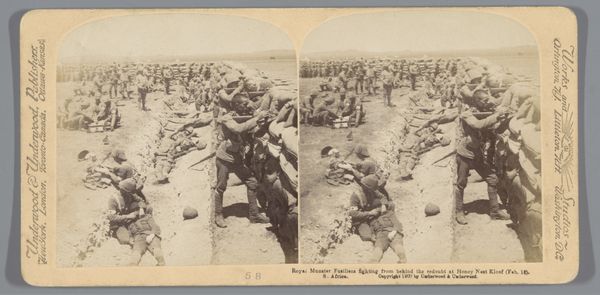
print, photography, gelatin-silver-print
#
portrait
#
african-art
# print
#
landscape
#
photography
#
gelatin-silver-print
#
history-painting
#
realism
Dimensions: height 88 mm, width 178 mm
Copyright: Rijks Museum: Open Domain
Editor: Here we have "British Soldiers in the Honey Nest Kloof in South Africa," a gelatin silver print from 1900 by Underwood & Underwood. The sheer number of figures receding into the distance creates a sense of vastness, but also of uniformity, almost like a pattern. What compositional elements stand out to you? Curator: The success of this piece hinges on the subtle play of light and shadow across the repetitive forms of the soldiers. Observe how the artist uses variations in tone to differentiate the figures, preventing them from merging into a monotonous mass. The formal tension between the individual and the collective is brilliantly realized through these tonal shifts and perspectival recession. Note the strategic placement of the soldiers in the foreground, whose backs draw us into the composition. Editor: It’s interesting that you point out the distinction between the individual and the collective. It seems to me the overall visual impact favors the collective, due to how similarly the soldiers are attired and arranged. Isn't there a flattening effect that almost subsumes individual identity? Curator: While uniformity is a key visual component, consider the minute disruptions within the ranks – a slightly tilted helmet, a varied stride, a shadow falling differently. These subtle variations resist complete homogenization. Semiotically, we can read this interplay as an acknowledgement of the individual’s presence even within a structured military order. Moreover, observe the use of lines -- both the implied lines of the soldiers' formation and the actual horizon line – these serve to divide the pictorial space and create a certain visual order, however rigid. Editor: I see what you mean about the small disruptions. I hadn’t noticed them before. Looking at how the shapes interact within that structured space definitely provides a different perspective. Curator: Indeed. This piece challenges the viewer to move beyond surface-level observations and engage with its deeper structural complexities. Editor: This close formal analysis has really helped me to appreciate the work on a new level, focusing on visual structure beyond the documentary aspect of the photograph. Curator: And by appreciating these aspects, we arrive at a deeper understanding of its intrinsic qualities as an artwork.
Comments
No comments
Be the first to comment and join the conversation on the ultimate creative platform.
